Evaluation of yogurt during the incubation time: effect of the addition of red wine
DOI:
https://doi.org/10.38017/1657463X.531Keywords:
Bacteria, Fermentation, Yogurt, WineAbstract
Fermented beverages such as yogurt are characterized by having a high nutritional value and provide health benefits among those found in the prevention of symptoms of lactose intolerance, positive effects on the immune system among others. The objective of this work was to evaluate the addition of wine during the incubation of yogurt. 50 ml of red wine added to 1 liter of milk was included to compare the results. The treatments were evaluated during the incubation period at 40°C until the yogurt was finished, during that period and every hour until the pH, acidity, viscosity and sensory analysis were evaluated. The results show pH values of 4.5 and acidity between 0.79 and 0.86 for the two treatments. The viscosity for both treatments showed a non-Newtonian behavior.
Sensory analysis indicates good acceptability for wine treatment. It was concluded that the use of wine is a viable option for the preparation of yoghurt presenting characteristic results of a yogurt Keywords: bacteria, fermentation, yogurt, wine.
Author Biographies
Yeimy Tatiana Castellanos, Universidad Pedagógica y Tecnológica de Colombia UPTC
Silvia Alexandra Gil, Universidad Pedagógica y Tecnológica de Colombia UPTC
Yessica Solany, Universidad Pedagógica y Tecnológica de Colombia UPTC
Ricardo Adolfo Parra, Universidad Pedagógica y Tecnológica de Colombia UPTC
Doctor Ingeniería y Ciencia de los Materiales
Universidad Pedagógica y Tecnológica de Colombia (Tunja, Colombia)
References
Basiri, S., Haidary, N., Shahram, S., & Niakousari, M. (2018). Flaxseed mucilage: A natural stabilizer in stirred yogurt. Carbohydrate Polymers, 187, 59-65. Córdova, J., Gonzáles, U., & Cerrón, L. (2018). Physicochemical and sensory properties of yogurt as affected by the incorporation of jumbo squid (Dosidicus gigas) powder. Food Science and Technology, 93, 506-510.
Demirkol, M., & Tarakci, Z. (2018). Effect of grape (Vitis labrusca L.) pomace dried by different methods on physicochemical, microbiological and bioactive properties of yogurt. Food Science and Technology, 97, 770-777.
Fazilah, N., Ariff, A., Khayat, M., Solis, L., & Halim, M. (2018). Influence of probiotics, prebiotics, synbiotics and bioactive phytochemicals on the formulation of functional yogurt. Journal of Functional Foods, 48, 387-399.
Fu, R., Li, J., Zhang, T., Zhu, T., Cheng, R., Wang, S., & Zhang, J. (2018). Salecan stabilizes the microstructure and improves the rheological performance of yogurt. Food Hydrocolloids, 81, 474-480.
Gao, H., Yu, Z., He, Q., Tang, S., & Zenga, W. (2018). A potentially functional yogurt co-fermentation with Gnaphalium affine. Food Science and Technology, 91, 423-430.
Gharibzahedi, S., & Chronakis, I. (2018). Review. Crosslinking of milk proteins by microbial transglutaminase: Utilization in functional yogurt products. Food Chemistry, 245,620-632.
Morris, J. (2018). Optimise the microbial flora with milk and yoghurt to prevent disease. Medical Hypotheses, 114, 13-17.
Parra, R. (2012). Yogurt en la salud humana. Revista Lasallista de investigación, 9,160-175.
Parra, R., Riveros, A., & García, J. (2014). Características fisicoquímicas, sensoriales y reológicas de un yogur adicionado con concentrado de carambolo (Averroha carambola). Revista de Investigación Agraria y Ambiental, 5, 145-154.
Shori, A., & Baba, A. (2012). Viability of lactic acid bacteria and sensory evaluation in Cinnamomum verum and Allium sativum-bio-yogurts made from camel and cow milk. Journal of the Association of Arab Universities for Basic and Applied Sciences, 11, 50-55.
Vénica, C., Wolf, I., Suárez, V., Bergamini, C., & Perotti, M. (2018). Effect of the carbohydrates composition on physicochemical parameters and metabolic activity of starter culture in yogurts. Food Science and Technology, 94, 163-171.
Zannini, E., Jeske, S., Lynch, K., & Arendt, E. (2018). Development of novel quinoabased yoghurt fermented with dextran producer Weissella cibaria MG1. International Journal of Food Microbiology, 268,19-26.




